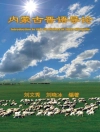Can television shows like Stranger Things, popular music by performers like Taylor Swift, advertisements for products like Samuel Adams beer, and films such as The Hunger Games help us understand rhetorical theory and criticism?
The Fourth Edition of The Rhetorical Power of Popular Culture offers students a step-by-step introduction to rhetorical theory and criticism by focusing on the powerful role popular culture plays in persuading us as to what to believe and how to behave. In every chapter, students are introduced to rhetorical theories, presented with current examples from popular culture that relate to the theory, and guided through demonstrations about how to describe, interpret, and evaluate popular culture texts through rhetorical analysis. Authors Deanna Sellnow and Thomas Endres provide sample student essays in every chapter to demonstrate rhetorical criticism in practice. This edition’s easy-to-understand approach and range of popular culture examples help students apply rhetorical theory and criticism to their own lives and assigned work.
Table des matières
Chapter 1. What Is Popular Culture and Why Study It?
Chapter 2. Expanding the Rhetorical Tradition
Chapter 3. A Narrative Perspective
Chapter 4. A Dramatistic Perspective
Chapter 5. A Symbolic Convergence Perspective
Chapter 6. A Neo-Marxist Perspective
Chapter 7. Feminist Perspectives
Chapter 8. A Music Perspective: The Illusion of Life
Chapter 9. Visual Perspectives
Chapter 10. Media-Centered Perspectives
Appendix. Writing a Popular Culture Rhetorical Essay
A propos de l’auteur
Deanna D. Sellnow is a professor of strategic communication in the Nicholson School of Communication and Media at the University of Central Florida. She conducts research in two major areas. The first focuses on strategic instructional communication in a variety of contexts including both in-person and online classrooms, as well as risk, crisis, and health communication contexts. The second focuses on rhetorical studies of popular culture (ranging from music to advertisements to television programs and feature films). She has conducted funded research for the World Health Organization (WHO), the U.S. Geological Survey (USGS), the U.S. Department of Agriculture (USDA), the U.S. Department of Homeland Security (DHS), the National Oceanic and Atmospheric Administration (NOAA), and the U.S. Centers for Disease Control and Prevention (CDC). Her work is published in refereed national and international journals, as well as several books. She has presented her work across the United States and in many countries around the world, including Canada, China, Denmark, Egypt, England, Germany, Hong Kong, India, Indonesia, Ireland, Italy, Japan, Senegal, Singapore, Spain, Sweden, Türkiye, and Vietnam. She and her husband, Tim, have a daughter (Debbie) and son-in-law (Scott), son (Rick) and daughter-in-law (Sarah), and three grandchildren (Lincoln, Emmett, and Rosemary).












